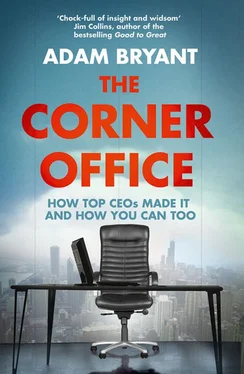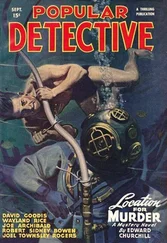Some CEOs worked early on as an assistant – a right-hand man or woman – to a top executive. Did they then ultimately rise to top jobs because of that early experience as an assistant, seeing the world through a CEO’s eyes at a young age? Or were they chosen for those assistant jobs because top executives had a keen eye for people who displayed passionate curiosity? Undoubtedly both are true.
The early career of Ursula M. Burns, the CEO of Xerox, is a case in point. She was noticed by top executives early on, and promoted to a level in the organization that few get to see at a young age.
The sharp inflection point in her career at Xerox came in 1989, when she was working in product development and planning. She was invited to a work-life discussion. Diversity initiatives came up, and somebody asked whether such initiatives lowered hiring standards. Wayland Hicks, a senior Xerox executive running the meeting, patiently explained that that was not true.
“I was stunned,” Burns said. “I actually told him, ‘I was surprised that you gave this assertion any credence.’ ”
After that meeting, she revisited the issue with Hicks, and a few weeks later he asked her to meet with him in his office. She figured that she was about to be reprimanded or fired. Instead, Hicks told her she had been right to be concerned but also wrong for handling it so forcefully. Then he told her he wanted to meet regularly with her.
“She was enormously curious,” Hicks explained. “She wanted to know why we were doing some things at the time, and she was always prepared in a way that I thought was very refreshing.” He offered her a job as his executive assistant in January 1990, when she was thirty-one. She would travel with Hicks, sit in on important meetings, and help him get things done. She accepted, and they talked a lot about leadership during downtime.
Burns continued to speak her mind and ask questions inside Xerox – particularly on an occasion in mid-1991 when the stakes were unusually high. At the time, Paul A. Allaire, Xerox’s president, held monthly meetings with top managers, and Burns and other assistants were invited to sit in, but off to the side.
Burns noticed a pattern. Allaire would announce, “We have to stop hiring.” But then the company would hire a thousand people. The next month, same thing. So she raised her hand. “I’m a little confused, Mr. Allaire,” she said. “If you keep saying, ‘No hiring,’ and we hire a thousand people every month, who can say ‘No hiring’ and make it actually happen?” She remembers that he stared at her with a “Why did you ask that question?” look and then the meeting moved on.
Later, the phone rang. Allaire wanted to see her in his office. She figured that it was not good news. But Allaire wanted to poach her from Hicks, so she could be his executive assistant. They, too, talked often about leadership. Allaire didn’t want to discourage her candor but, like Hicks, he offered tips about how to be more effective—“like giving people credit for ideas that they didn’t have but you sold to them, to give them ownership,” Allaire recalled advising her. Allaire saw in her the right mix of energy, confidence, and curiosity – an eagerness to learn.
Burns was forceful about asking questions on her way to the corner office. “You have to learn and you have to be curious,” her mother always told her.
And how does Burns describe her role today as CEO? “The job is exactly not about having the right answers,” she said. “The job is having great questions asked and great people helping you answer them. Not all the right questions come from you, either. But I have a perspective and a purview that allow me to have a different set of questions. If somebody comes to me with a problem, almost surely I’ll send it back and say, ‘Think about this. How about this? How about that?’ ”
As these CEOs have shown, asking good questions can help at every stage of a career, for people just starting out and for those in charge of an international corporation. It bears repeating. They show interest and enthusiasm, and they ask questions. They focus on being interested rather than trying to be interesting, as the saying goes. People who show this kind of initiative will find that it leads to important relationships – at work and outside of work. That’s how people find mentors, and how they connect with leaders of the company.
Some people in business refer to the 80/20 rule, a variation of a concept called the Pareto Principle. It refers to the idea that 20 percent of the people in any company do 80 percent of the work. Now, think again about those one hundred people in an organization, all at the same rank. If twenty of them are going to be the work horses of the group, there will be an even smaller number who go beyond their assigned tasks, and take an interest in the people and the organization outside their job descriptions. They will stand out.
Show some passionate curiosity – it is a simple rule with an enormous payoff.
“If you give positive vibes, if you show an interest, by and large a lot of people will react,” said Stephen I. Sadove, the CEO of Saks. “Not everybody, but people tend to react. When people show an interest in reaching out, I tend to react to them.”
Chapter 2
BATTLE-HARDENED CONFIDENCE
Consider thoseone hundred employees again – all vice presidents at the same company. As their bosses size up this group, some qualities are easier to spot than others. Passionate curiosity? It’s there for all to see. There’s an energy, a buzz, from people who have it, and you can pick them out of a crowd.
Other qualities are tougher to discern, especially the ability to handle adversity. Everybody faces challenges of some kind or another in their life, but some people deal with adversity better than others. And then there are those who embrace it, who relish it, who want the tough assignment when the pressure is on. These people have plowed through tough circumstances, and they know what they’re capable of handling. They have a track record of overcoming adversity, of failing and getting up off the mat to get the job done, no matter what. They have battle-hardened confidence.
The same is true for companies. Many CEOs say their corporate culture has been strengthened in painful periods when nothing seemed to be working, and the leadership had to pull everyone together to establish their core values and beliefs.
If there were some test to find out whether a person had this quality, it would be a huge moneymaker. But people, and companies, reveal how they deal with adversity only in the context of new challenges – when they are faced with potential or real failure and the status quo is not an option. The best predictor of behavior is past performance, and that’s why so many CEOs interview job candidates about how they dealt with failure in the past. They want to know if somebody is the kind of person who takes ownership of challenges, or starts looking for excuses because there are too many factors beyond their control.
People can talk a good game in job interviews, but that talk can seem meaningless when someone is confronted with a difficult task and the moment of truth arrives. In such circumstances, some people fold.
“I think hiring great people remains extremely, extremely hard,” said Jen-Hsun Huang of Nvidia. “The reason for that is this: It all comes down to how somebody deals with adversity. You can never really tell how somebody deals with adversity, whether it’s adversity that’s created by the environment or adversity that you’re creating for them. As the CEO, as a leader, sometimes you have to put people in the hot seat – not because you want them to be in a hot seat, but because the hot seat needs to have somebody sitting on it. And so you need a great player on it. When you have a difficult situation and you need somebody to take it and run with it, some people just take it and make it happen. They feed on adversity. There are some people who, in the face of adversity, become more calm. When the world is falling apart, I actually think my heart rate goes down. I find that I think best when I’m under adversity. Some people see adversity and they just cower, as talented as they are. You could ask them about the adversity they had in the past, but you never really know the intensity of that adversity.”
Читать дальше












